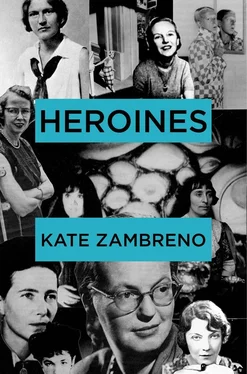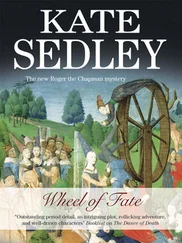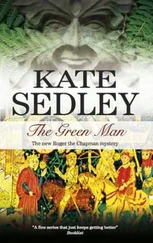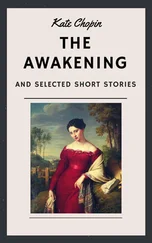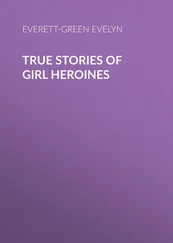“Yes & wonderful, wonderful,” wrote Viv times two on the type-script of “The Waste Land,” which she helped edit, supplied lines for, even wrote another clever passage herself excised by Ezra Pound but that appeared later under a pseudonym in their little magazine, The Criterion .
“Photography,” Ezra scrawled next to these lines. A too-true snapshot of an unhappy marriage.
The “A Game of Chess” section conjures up a trapped mutual miserabilism. A tiny, cramped domestic space. The murder of a small room. Elizabeth Bowen observed that the Eliots were “two highly nervous people shut up together in grinding proximity.” He punishes her with silence. It riles her up more. “He did not see that Eliot, in starving Vivien of affection, was unwittingly contributing to her hysteria.” She tries to get him to talk to her, her shrill, nervous voice.
“What are you thinking of? What thinking? What?” Our bickering a constant patter, rhythm, in our domestic quotidian. “I never know what you are thinking. Think.” I who insist on narrativizing everything, on giving voice to a constant monologue. He who often prefers silence, introspection.
She is battering around the room, a zinging ball, wanting to escape. He answers in monotone. Her persistent interrogations which threaten to evict all sense from his brain. She pushes him to the edge. Threatens to rush out on the street raving. Makes him remember and resurrect personal traumas.
The section has the aesthetic of shell shock (the masculine term for hysteria, soldiers coming home from WWI and jumping out of windows, like Septimus Smith in Virginia Woolf’s Mrs. Dalloway ).
The Great Men’s marriages were their wars. They who didn’t actually make the Great War. Eliot, unfit because of his hernia. Fitzgerald who enlisted but never actually saw the front lines, much to his disappointment.
A return to these old roles that we play, that we didn’t even originate. All the ghosts of the past. Ghosts that aren’t even our ghosts.
When? A day here, or maybe a day in Chicago.
At the odds and ends of everything today. Slamming up against his marble remove. I pick fights, I pick at him, we are monkeys in a cage.
“In the Cage”—the original title of the “A Game of Chess” section of “The Waste Land.”
The suitcase pulled to the center of the room, like the feuding Fitzgeralds. “Infamous rows.”
Zelda would wildly flirt with other men. The rumored affair with the aviator. Scott had his actresses. A marriage so soon in ruins. Scott began to drink. Zelda began to implode. Photos where the strains are showing. In photographs their smiles are tight, Zelda is tense, ready to strike.
Simone de B writing of Frieda and D.H. Lawrence’s numerous and physical fights (usually over Frieda’s children, who she left to be with Lawrence): “Married life had become for them a series of scenes repeated over and over in which neither of them would give in, turning the least quarrel into a titanic duel between Man and Woman.”
It does feel like a war with him, at these times, a grudge match stripped of memory, naked.
Sometimes I feel I am living with the Enemy.
Sometimes I know I am living with the Enemy.
It is like you have two selves. And you have no memory of the other self. You can be withholding, cold. You can be nurturing, supportive. I have two selves too. The me that lectures women on literature where husbands oppress their wives, and the me that secretly lives that life.
When I read Vivien(ne)’s biography, I cast John as the villain in my current misery. I am more aware than ever how I become infected by his containment, his repression, his almost paranoid desire for privacy.
Fights fueled by feelings of entrapment, a fervent, feral desire to escape. “Enforced domesticity brought on black moods.”
They were always moving, moving, moving, Tom and Viv, the unhappy couple. Eliot’s Soho bachelor lodgings at 35 Greek Street wouldn’t do. And so began their game of musical chairs. Vivien(ne) loved to dance to the phonograph. Bertrand Russell paid for her lessons. Zelda had the same ballet teacher as Lucia Joyce. She would bring Madame Egorova white flowers in glasses.
Always searching, frantic to get out of London, to a country cottage, somewhere can you please help they send furious SOS’s to their rich friends. Then later the tourism of sanitoriums and seaside convalescence. In their years together, Tom plunged into a suicidal depression. Each of them struggled with terrible influenza. Her “nerve-storms” and migraines. “Quarrels and migraines punctuated their lives.”
What was he trying to escape from? His new bride, most likely. “It is terrible to be alone with another person,” Eliot writes, a line later excised from “The Waste Land.”
In London, we moved around wildly. Three times in nine months — all the modernist couples moved so much, Katherine Mansfield and John Middleton Murray moved twelve times in three years, June and Henry Miller nomadic in New York, Jean Rhys and whatever husband she had at the time, the Fitzgeralds, the Eliots. The Bowles of course. A whirlwind. But how do you feel steady when your bottom is always slipping out from under you? So restless, yes, a generation lost.
Rooms after rooms, shabby flats, like a Jean Rhys novel. Joseph Cornell’s bird houses. The inscription of his “Penny Arcade Portrait of Lauren Bacall”: “An insight into the lives of countless young women who never knew, or may never know, any other home than the plainest of furnished rooms in a drab hotel.”
A sort of marital aviary. Vivien(ne)’s hawk nose, Tom’s hawk eyes.
They stayed at Bertie’s near the British museum, a convenient ménage à trois . (Always French, ménage à trois, maladie à deux .) Eliot slept in the hall on a chair. A third, to provide relief from themselves. Maybe Viv thought, why not? If I cannot be a Great Man I will fuck one.
Then a “cramped, noisy flat” near Paddington Station, 18 Crawford Mansions, Crawford Street, Marylebone.
We too lived near Paddington Station, all the wonders of W2. The first in a series of cramped rooms. The bed that folded out from the closet. The tiny schoolkid desk. We went to Woolworth’s and bought cutlery, plates, two white teacups. Our married life in miniature. At night a pounding on the other side of the door. The constant tempo of the humping Spaniards.
Then a large room above a curry restaurant on Brick Lane in the East End, past crowds of Jack the Ripper tours, near where Zelda donned men’s clothes for a nighttime tour of the docks. Our neighborhood was known as “dodgy.” The callers luring passers-by in to their curry houses, drunken American tourists, stag parties. Sometimes a drunken fight would break out into the streets, and we would watch by the windows as the bobbies arrived.
HURRY UP PLEASE IT’S TIME — the barking refrain from “The Waste Land.”
The Eliots lived across from a pub at their first flat on Crawford Street. Tom complained about the actresses playing the phonograph. They entertained each other with cruel cariatures of their beastly neighbors. Vivien(ne) would mimic their Cockney accents. “Well you see, Sir, it’s the artistic temperament. We ordinary folks must learn to make allowances for artists. They’re not the same as us.” Said their landlord, unironically.
The noise on Brick Lane was fragmenting, obscene. We had to leave.
Their move to a more spacious abode at 9 Clarence Gate Gardens, a large Victorian building close to Regents Park. It was where they stayed unhappily the rest of their marriage, editing The Criterion , where she later lived alone, his photographs on the wall. Our Room #3 was also close to Regent’s Park, had the same “dark carpeted staircases” and “jangling lifts” of the Eliots’ earlier “Mansions,” as Viv derisively put it in a story. Another institutional tomb. A card table for a dining table. The bed actually two mattresses piled on top of each other.
Читать дальше
